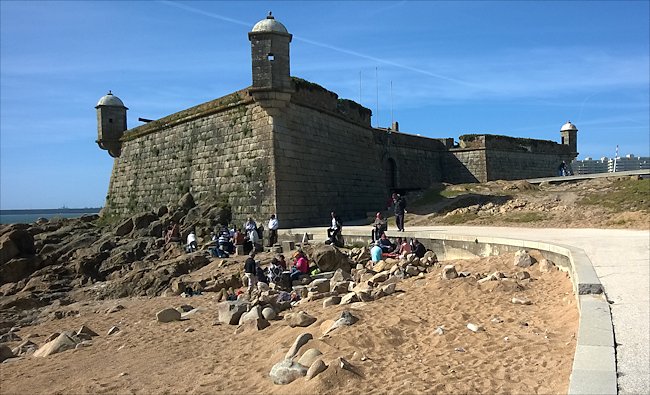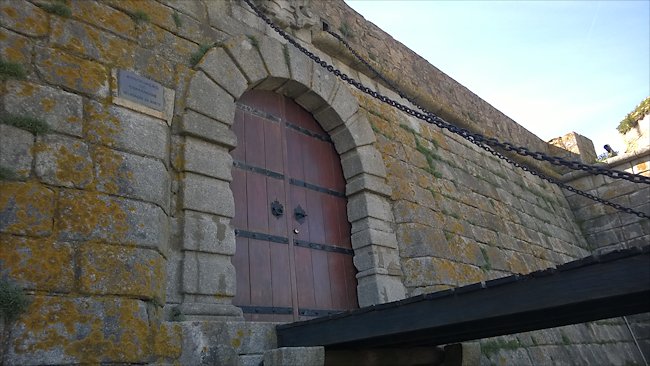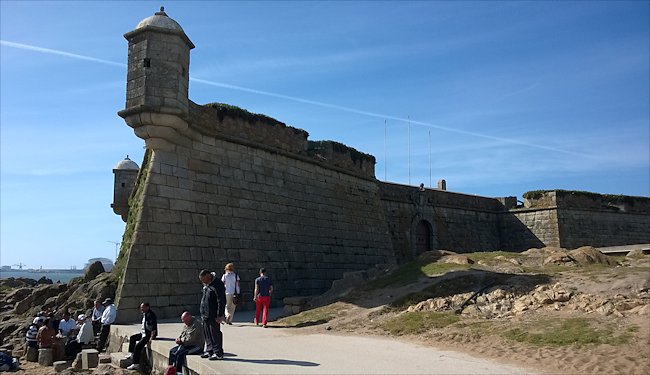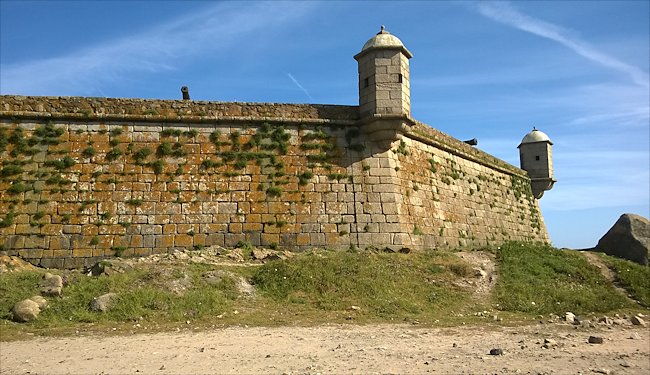Castelo do Queijo
Translated into English the Castelo do Queijo means the Cheese Castle. The shape of the castle is unsual and looks like a huge piece of cheese.

The Southern view of the Cheese Castle - Castelo do Queijo Porto's costal fort
You will find the Castelo do Queijo on the Atlantic coast at the western end of the Avenida da Boavista just south of the 2 km long Matoshinhos sandy beach. Its correct name is Forte de Sao Francisco do Queijo.
It is the middle fortress of a chain of three castles that protect the Portuguese coastline guarding the approach to the harbour of Porto and the mouth of the Douro River. King John IV of Portugal gave orders the construction of this new Fort in 1643. Building

This is the Castelo do Queijo Forts main entrance. It used to be a drawbridge that could be raised in times of trouble.
Inside the fort they were barracks for the artillery officers and men, a chapel and a fortified powder magazine to hold gunpowder and later shells. The only entrance to the castle was by a large wooden gate on the eastern side of the fort that was protected by a drawbridge.
Over the gate is the coat-of-arms of Portugal, surmounted by royal crown, under a granite sphere. On the corners of the castle walls stone watch towers were built to provide protection from enemy weapons and cover from the elements for a single soldier who was posted to act as lookout.

Locals meet in front of the castle walls to play games of cards on good days
During the invasion of Napoleonic forces the castle of cheese was useless. It was designed to fight the enemy approaching the coast by the sea. The French troops attacked Porto overland from the North. During the Civil War and siege of Porto in 1832 - 1833 the Castelo do Queijo was severely damaged. It was no match modern artillery.
During the revolt of Maria da Fonte thirty-three years later in 1846 the castle was occupied by troops loyal to the Junta of Porto. It was further damaged by shells fired from the Portuguese frigate Iris but was loyal to the government of Queen Maria II.

The top of the walls were gun platforms where cannons could pound enemy ships that sailed too close to the coast.
In 1938 restoration work started to adapt the castle for use as a museum. During World War II anti-aircraft batteries were installed on the castle walls because of the fear of German attacks. After the war the naval brigade from the Portuguese Legion shared space in the fort with the Northern Commandos.
There is not much to see inside the fort. There is a small military museum. There are a few cannons left on the castle walls. It is fun to go into the watchtowers, look at the view and imagine the soldiers board out their brains they after day looking for any potential threats in the heat of summer and the shivering colder winter.
Travel books

